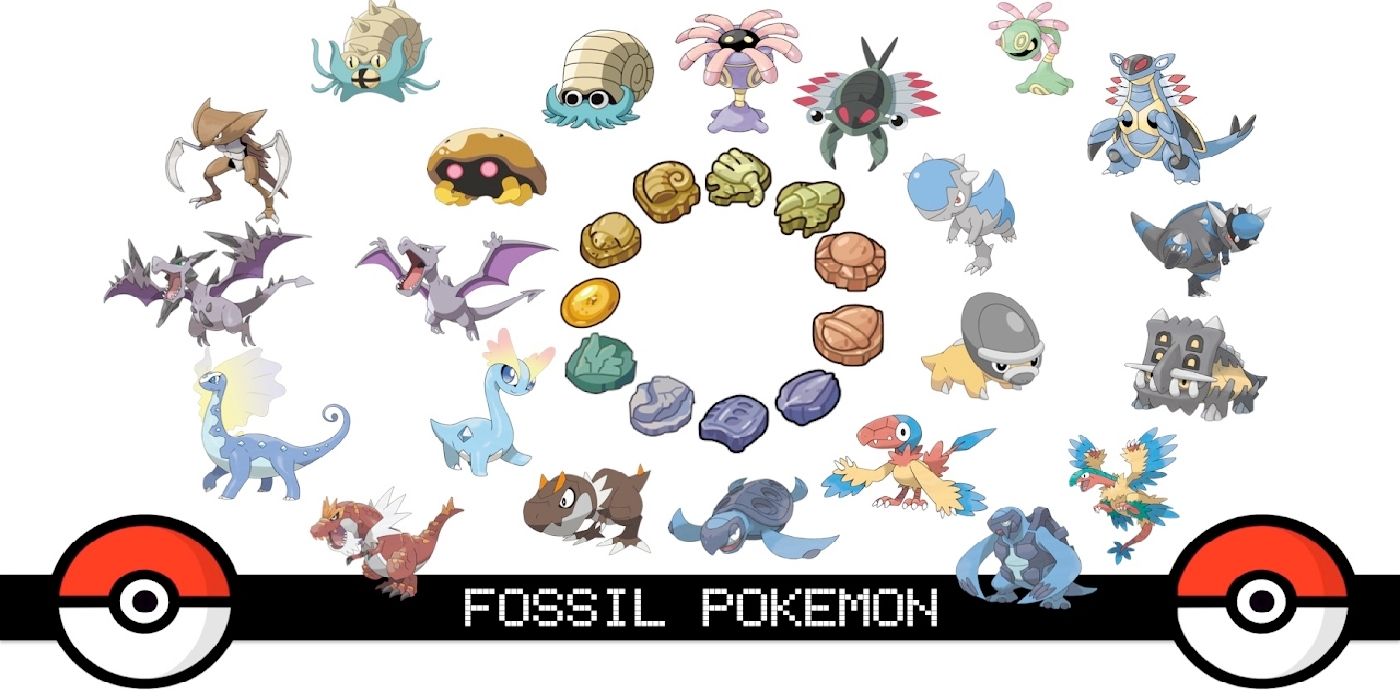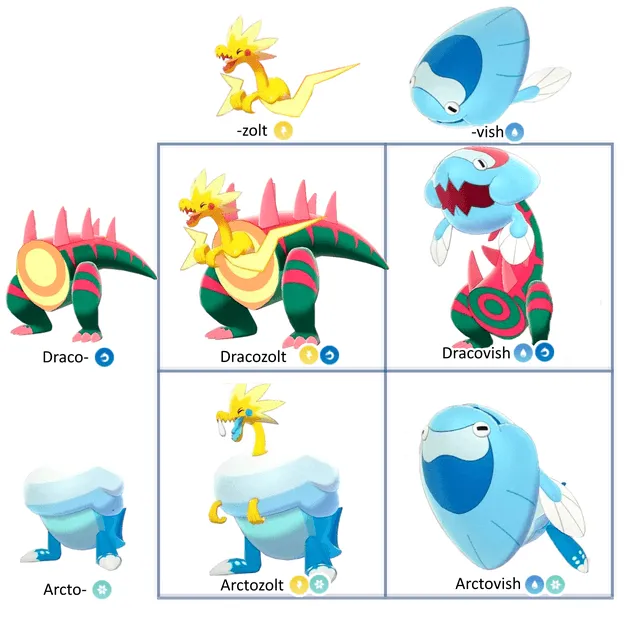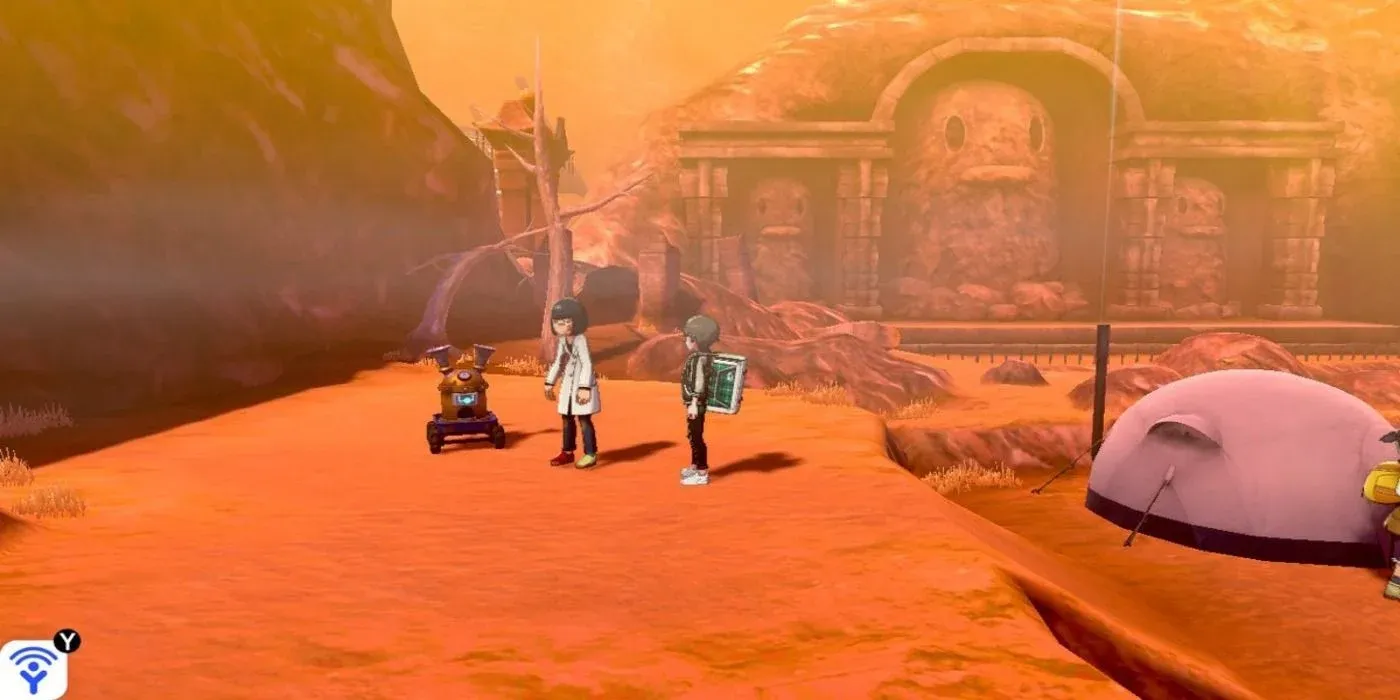As with every new Pokemon game, Pokemon Sword and Pokemon Shield introduce some new mechanics to shake things up and differentiate themselves from previous games. One unique change in this generation is the fossil Pokemon, and the way players go about obtaining them. Although fossil Pokemon have always been a feature of Pokemon games (with the exception of generation two), the new fossil Pokemon break several of the established Pokemon rules players are used to. For example, there are now four fossil Pokemon instead of two, and they are not rock types like every fossil Pokemon before them. Even the method used to bring them back has changed.
For those that don't know, fossil Pokemon are Pokemon which a scientist is able to bring back to life from a fossilized state. As such, they are generally always rock type and resemble some ancient creature from the real world. Usually, a player may find a fossil during their adventure and then take said fossil to a specific scientist. Upon doing so, the player obtains the Pokemon. There are typically two different fossils in each region, with each one corresponding to a Pokemon, but Pokemon Sword and Shield change this dramatically.
In Pokemon Sword and Pokemon Shield, there are actually four fossils to be found, and although there is still a scientist, she requires two fossils to resurrect an ancient Pokemon. The four fossils are the bird fossil, the dino fossil, the fish fossil, and the drake fossil. What Pokemon the player receives is entirely dependent on which two fossils they bring. There are four combinations which result in Pokemon: dino and fish, dino and bird, drake and fish, and drake and bird. The designs of these Pokemon make it clear that these aren't ancient Pokemon recreated from a fossil, but combinations of two ancient Pokemon to create something utterly new entirely.
The naming convention for these fossil Pokemon is interesting as well. Any Pokemon made with the dino fossil will have the prefix "Arcto," while any Pokemon made with the drake fossil will have the prefix "Draco." The other two fossils give the name a suffix; the fish fossil results in the suffix "vish" while the bird fossil results in the suffix "zolt." The fossils used also determine the new Pokemon's type; using the dino fossil causes the Pokemon to be ice type, the Drake fossil (predictably) causes it to be dragon type, the fish fossil grants the water type, and the bird fossil grants the electric type.
Given all this, there are four possible combinations of fossils that produce Pokemon, as one cannot combine the dino and drake fossils or the bird and fish fossils. Combining the dino and fish fossils results in the player receiving Arctovish, an ice and water type Pokemon. The name is derived from the two fossils used, Arcto representing the dino fossil and Vish representing the fish fossil. Dracovish is another possibility, sporting the water and dragon type, and it is a particularly resilient Pokemon as it's only weaknesses are dragon and fairy.
Arctozolt is the result of mixing the dino fossil with the bird fossil, and creates a very interesting type combination of ice and electric. The final fossil Pokemon in Pokemon Sword and Pokemon Shield is Dracozolt. Dracozolt can be obtained by providing the scientist with the drake fossil and the bird fossil, and is a dragon and electric type Pokemon. These four new fossil Pokemon differ greatly from previous fossil Pokemon in more ways than one, going beyond just the method in which players obtain them and into how they look as well.
Historically, archeologists in the real world have made mistakes and mismatched fossil pieces before, and this fact is likely the reasoning behind this strange mix and match method of creating fossil Pokemon. In the past, however, fossil Pokemon were all very similar to real, prehistoric plants and animals. Omanyte, for example, is like the extinct Ammonite, while Tyrantrum is clearly inspired by the infamous Tyrannosaurus Rex. This is not the case for the new fossil Pokemon. The new designs seem to literally be two ancient Pokemon mashed up into one, so some have taken to imagining what these Pokemon might have looked like in their complete forms.
The dino fossil looks as though it may have been some kind of ice type Plesiosaur inspired creature. Were this Pokemon to show up in previous Pokemon games, it likely would take on the rock type as well. The drake fossil is interesting as it seems to be some kind of stegosaurus, and would have had the dragon and rock types. The fish fossil is unsurprisingly some sort of prehistoric fish, water and rock type, while the bird fossil seems to be a sort of raptor, and would have a unique type combination of electric and rock type.
Overall, the new fossil Pokemon have received mixed reception from fans. Some find the concept ridiculous, as the Pokemon look very mismatched, while others are charmed by these new Pokemon. At the very least, it reinforces that Game Freak is never afraid to try new things and see what sticks, and it certainly has resulted in some interesting type combinations for players interested in competitive play.
How will Pokemon handle fossils moving forward though? In the past, Pokemon games have been quick to ditch new ideas regardless of fan reaction. Mega evolutions are seemingly no more, and even the more recent Z moves have been removed from Pokemon Sword and Pokemon Shield. With that in mind, it is unlikely that players will be mixing fossils in future generations of Pokemon. This idea, like so many others, will likely fall to the wayside after a couple of years, so players should enjoy it while they have the chance.
Pokemon Sword and Shield are out now exclusively for the Nintendo Switch.
Image Credit: YouTube



